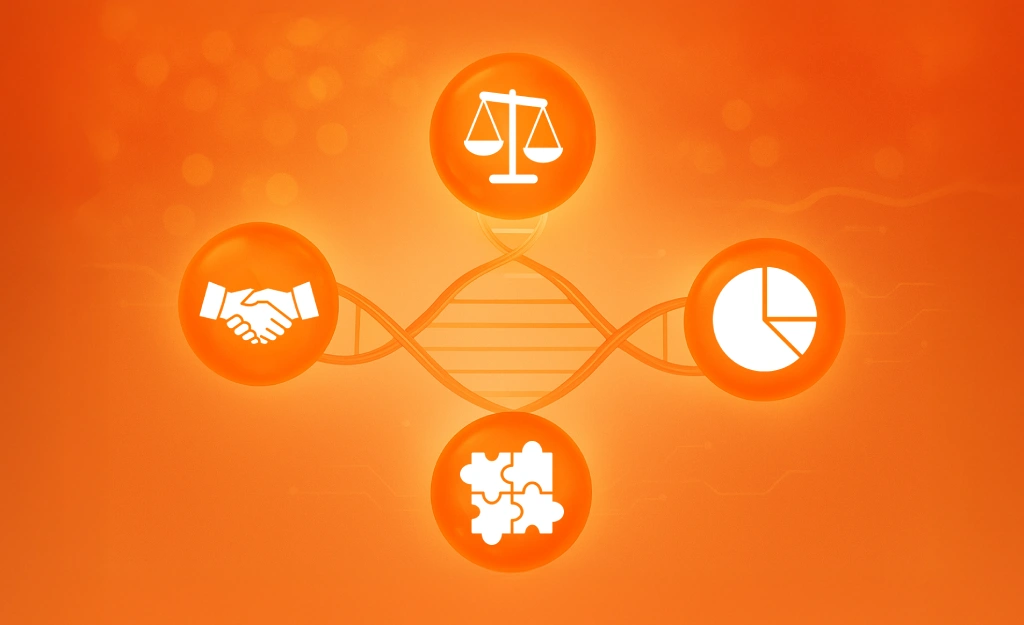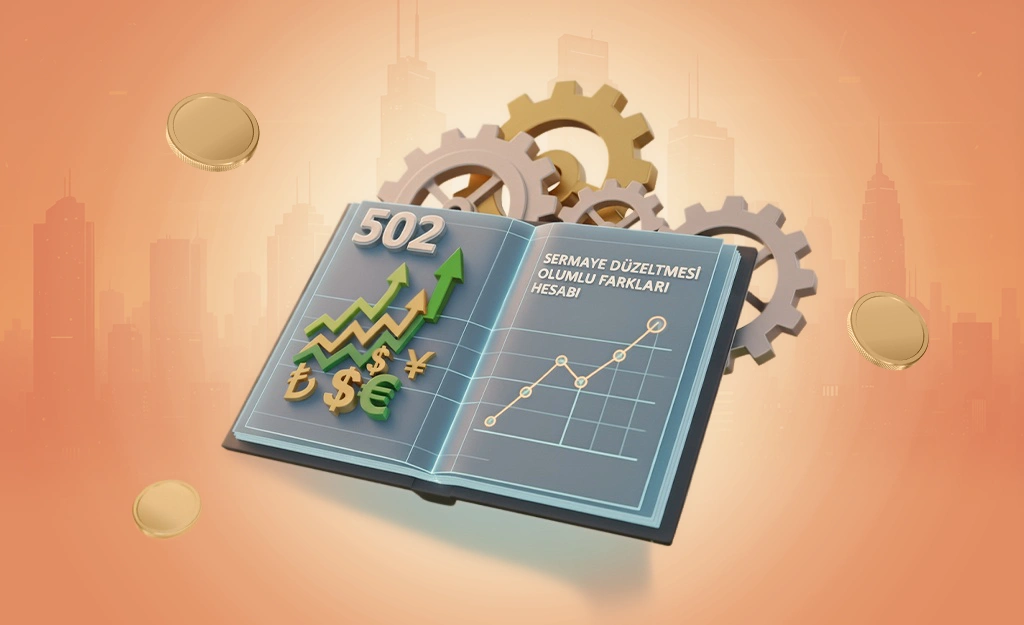The balance sheet is used to assess a company's financial health, understand its assets and liabilities, see its liquidity position and monitor the ownership rights of owners. It is therefore a critical source of information for investors, lenders and other interested parties.
What is a Balance Sheet?
A balance sheet is a statement that shows a company's financial position at a given point in time. It shows the company's assets, liabilities and equity. The balance sheet summarizes the company's financial position and helps interested parties, such as investors and lenders, make decisions about a company's financial health.
It consists of two main sections: assets and resources. Assets represent the things of value that a company owns, while resources refer to the elements that finance these assets. The balance sheet is based on a principle of equivalence, meaning that the total value of assets must equal the total value of resources.
Assets
On the left side of the balance sheet, the assets of the company are listed. These include everything the company owns, such as cash, accounts receivables, inventories, fixed assets and other assets.
Own resources
Below the balance sheet, the company's equity is listed. This includes all the equity owned by the company, such as shares, paid-in capital, profits and losses.
How to Prepare a Balance Sheet?
Although preparing a balance sheet requires some numerical skills, it is an important source of information about the financial health of any company. The balance sheet is prepared in the following steps:
Step 1: Listing Assets
Identifying a company's assets is the first step of the balance sheet. Assets include tangible and intangible assets owned by the company, such as cash, inventories, real estate, machinery and equipment. The fair value of these assets must be accurately determined.
Step 2: Listing Liabilities
The second step in preparing a balance sheet is to list the company's debts. Debts represent a company's sources of financing. Short-term debts refer to debts that the company has to pay in less than one year. Long-term debts are debts that are payable in more than 1 year. These can come in various forms, such as bank loans, debentures, supplier debts, etc.
Step 3: List Equity
Equity refers to the capital owned by the owners of a company. Factors such as the initial capital of the company, profits and losses, and the issuance of shares affect equity. Equity is subtracted from the sum of assets and liabilities to ensure the balance sheet is balanced.
Step 4: Balancing Assets and Liabilities
The balance sheet should show that a company's assets and liabilities are balanced. Therefore, preparing a balance sheet requires a painstaking balancing process to make sure that assets are more than liabilities.
Step 5: Calculating Shareholders' Equity
The balance sheet also shows the equity of a company. Equity is all the company's own resources, such as shares, paid-in capital, profits and losses. Equity is calculated by subtracting assets from liabilities.
Organization of the Balance Sheet
A balance sheet is a statement in which assets, liabilities and equity are shown in an organized way. Assets are listed under the liabilities and equity sections. This table should be prepared using the correct order and format to ensure that the balance sheet is understandable and readable.
Why is a Balance Sheet Important?
The balance sheet provides important information about the financial health of companies. By showing the assets, liabilities and equity of businesses, it provides a guide to assess their financial performance. The balance sheet helps investors, lenders and other interested parties make decisions. In addition, a company's balance sheet is an important tool for investment decisions, debt repayment plans and other financial decisions.
The balance sheet also shows how liquid a company is. Cash flow is vital to a company's survival and the balance sheet shows that cash flow is being managed properly.
The balance sheet also shows a company's growth potential. The balance of a company's assets, liabilities and equity shows a company's growth potential. If a company's debts exceed its assets, this can negatively affect the company's growth potential. In this case, accountants, lenders and business managers can play an important role in the decision-making process.
Importance of Balance Sheet Preparation
Preparing a balance sheet is important to keep track of a company's financial position. It allows the company to monitor its cash flow, debt payments and equity. It is also used to assess a company's growth potential.
Tips for Preparing a Balance Sheet
Some tips to consider when preparing a balance sheet:
List assets and liabilities correctly.
Balance assets and liabilities.
Categorizing assets and liabilities separately.
Calculating shareholders' equity.
Having the right numerical skills to prepare the balance sheet correctly.
Importance of Balance Sheet for Businesses
A balance sheet is a statement summarizing the financial position of a business. It also helps businesses to make decisions. Here are some reasons that explain the importance of the balance sheet for businesses:
Helps Investors Make Decisions
The balance sheet is an important source for investors when deciding whether to invest in a business. Investors use the balance sheet to analyze the financial position of a business and decide whether it is healthy or risky.
Important for Lenders
Because the balance sheet shows the financial position of businesses, it helps lenders to grant loans to businesses. Lenders use the balance sheet when analyzing the debt repayment potential of a business.
Helps Business Management
Since the balance sheet provides information about the financial health of an enterprise, it helps business managers in the decision-making process. The balance sheet shows business managers what the assets, liabilities and equity of the business are. With this analysis, it is determined how the business is doing financially.
Used for Tax Declarations
The balance sheet is useful for businesses to prepare tax returns. Tax returns show what a business's income and expenses are. Therefore, the balance sheet is used as an important resource in this process.
Shows Growth Potential
The growth potential of a business is an important indicator of its financial health. The balanced relationship between a business's assets, liabilities and equity reflects its growth potential. Therefore, a balance sheet report is very important to assess the financial health of a business and determine its growth potential.
Balance sheet analysis reveals the growth potential of a business by examining the relationship between its assets, liabilities and equity.
Terms Used for Balance Sheet Calculations
Some terms are used in balance sheet calculations. Terms used in balance sheet calculations:
Assets: Refers to everything a company owns.
Liabilities: Refers to everything a company has to pay.
Equity: All the equity of a company, such as its shares, paid-in capital, profits and losses.
Cash: Refers to the amount of cash a company has on hand.
Accounts receivable: Refers to the amount a company has due from its customers.
Inventories: Refers to the value of products held by a company.
Fixed assets: Refers to vehicles, machinery, buildings and other assets that a company can use in the long term.
Short-term liabilities: Refers to debts that a company has to pay in the short term (less than 1 year).
Long-term liabilities: Refers to debts that a company has to pay in the long term.
Paid-in capital: relates to the value of a company's shares.
Profits and losses: Refers to the profits and losses of a company.
Balanced balance sheet: refers to the situation where a company's assets exceed its liabilities and its equity is subtracted from the sum of its assets and liabilities.
If you want to increase the growth potential of your business, it is important to regularly update and analyze your balance sheet report. This way, you can better understand the financial health of your business and determine your growth strategies accordingly.
Managing your business' financial resources more effectively is important to increase growth potential. For this purpose, it is of great importance to report your financial flows quickly. Fast and accurate financial reports will help you understand the financial status of your business and make the right decisions. Meet Finrota, which digitalizes all your processes with Collection and Open Banking products. You can immediately discover our products that will give you an advantage by trying them free of charge with a demo request.



